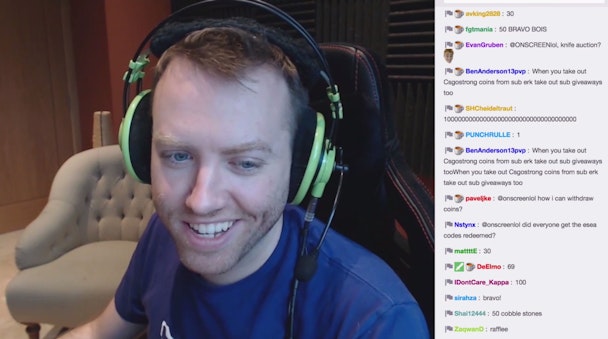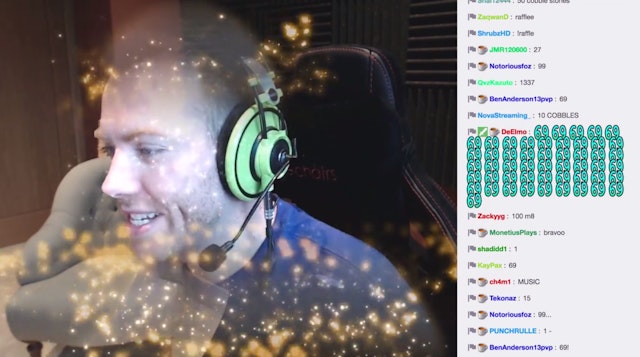Amazon’s Twitch VP of sales for Europe: ‘We now generate more ad revenue from non-gaming brands than gaming brands in the UK’
Gaming advertisers aren’t the only ones on Twitch these days. Advertisers from the entertainment industry are also showing an interest, so much so that the live video game streaming platform claims it now “generates more advertising revenue from non-gaming brands” in the UK.

Amazon's Twitch is to work with more non-gaming brands.
If there was any ever doubt as to Twitch’s credentials as an emerging media force, the assertion that it is starting to make more money from mainstream brands goes some way to clearing it up. At least that’s what Steve Ford, vice president of sales for Twitch’s Europe business hopes as he stresses the “tipping point has definitely come”. And yet, his claim belies a strategy still bereft of the raft of big brand cheerleaders that accompanied the likes of Facebook and Twitter when they were establishing their own ties to advertisers.
“Without giving anything away, we are already very successful commercially,” assures Ford, who rattles off recent campaigns for companies as diverse as Paramount Pictures, HP, Netflix, and Kellogg’s. “But there’s still work to be done and exciting partnerships to explore, with the team really motivated by the journey ahead.”
Part of that journey will try to make further headway in recruiting non-gaming brands, with Twitch adamant that they will become more prevalent in the long-term. Mindful that this rush for brands could render the number of minutes watched on the platform this year lower than the 292 billion it posted in 2016, the social network argues that the way it works is “very, very different” in comparison to other platforms.
What makes Twitch so different to its peers is the sheer amount of time those hard-to-reach millennials spend on the platform: the average Twitch viewer watches 106 minutes of livestream content per day – that’s longer than many Hollywood movies. Furthermore, a massive 292 billion minutes of livestreams watched during 2016, which equates to over 500,000 years’ worth of content in the space of just 366 days. Whereas in 2015 Google revealed the average YouTube viewing session on mobile devices was 40 minutes.
For better or worse, Twitch’s pitch to brands has more in common with advertising on TV than it does on many of its peers, with those video game broadcasters, personalities, leagues, teams and tournaments (Twitch Partners) allowed to show ads able to do so once every eight minutes as well as run pre-rolls. Unlike TV, ads on Twitch are rooted in a distinct intimacy between Twitch streamer and viewer via the real chat feature alongside the stream. An easy way to think of it is as the antithesis to the slick and refined content on YouTube.
These qualities piqued the interest of Comic Relief, which decided to pit celebrities against their video game equivalents for a week-long series on Twitch. Pairings included England footballer Dele Alli and TV comedian Rob Beckett competing on their favourite games to raise cash for issues such as youth homelessness, before handing over to the Twitch community to stream their own games while raising life-changing funds.
“Our Gameraisers partnership with Twitch is an important part of our strategy to engage young people with our brand,” said Val Pumfrey, head of youth engagement and fundraising at Comic Relief.
“As a digital platform with such a huge 16-24-year-old audience, Twitch has enabled us to connect with young people in a totally new way,” Pumfrey adds. “The Twitch UK team have been fantastic. Their advice and knowledge about working with their partners and how this audience responds to charity partnerships has been invaluable. This is a first step for us into the gaming world and we’re excited to see where it will lead.”
There is “no doubt” that Twitch is a “highly effective media buy for brands to reach millennials and centennials at scale,” says director of customer solutions across Europe Adam Harris, who cites last year’s tie-up with Paramount Pictures in the UK for Star Trek Beyond as an example of just how effective it can be.

Twitch streamers including Onscreenlol, appeared in a ray of light clearly taken from the blockbuster (see above), during a live broadcast, leaving their followers perplexed as to what they had just witnessed. In fact, viewership to the stream increased by 30% as talk of the disappearance grew online, before fans began to piece together what had happened using clues dotted about the empty room. The influencers remained silent for 24 hours only to then rematerialize on a new Twitch channel entitled NCC1701 – the registry number of the USS Enterprise – where they battled people dressed like the villains from the movie on video games in front of an audience of 143,000 people who posted around 6,000 messages.
Promotions like this, which are more native by design, could be one way Twitch shows advertisers how to cope with the fact that gaming audiences are generally more tech conscious and consequently likely to adopt ad blockers. A quick online search coughs up several forums, posts and stories on the issue among its community, particularly after the arrival of video ads last November that can’t be blocked. Even if Twitch does push through more partnership deals to curb ad blocking, the bigger issue for its sales team is whether the revenues from such deals would ever match those pulled from pre-rolls, which are premium, expensive and plentiful.
“It [Twitch] has also proved itself to be an essential creative platform for some of the world's biggest brands to reach that incredibly sought after digitally native demographics,” said Harris. “Audiences increasingly expect their media environment to be social and interactive and they consume their content in live digital environments. That content is produced by people like them, who speak their language, and is presented in an authentic and unfiltered manner. Twitch has both the platform and expertise to enable brands to take advantage of this to execute live branded content in a credible, safe and meaningful way.”
As attractive as this personal connection between content and viewer might sound to advertisers, Twitch still has questions to answer as to what those meaningful conversations look like.
“We’re trying to spend our time having deeper, meaningful conversations with Twitch about we can integrate [our advertisers] with them further,” says Liam Pook, senior partnerships and emerging media director at Essence.
The agency has bought Twitch pre-roll ads on behalf of clients such as HP and Pook describes its relationship with the platform as a “fairly positive experience”. However, he would like more clarity on how Twitch defines engagement. “If there is a claim that audiences are much more engaged on this platform then I’d love to see some results that prove that, especially results that I can compare platform to platform,” Pook continued.
“It would be great if Twitch are approaching things from a measurement perspective because I feel that’s the next evolution; they’ve built an audience; they’ve get a fair amount of scale to be able to attract gaming brands and now they need to scale beyond that and to do so they will need to start thinking about measurement.”
Felix Morgan, senior strategist and innovation lead at Livity, has similar reservations about Twitch but acknowledges its the “creative potential” following a well-received campaign it ran on the platform last month
“For anyone speaking to youth audiences, Twitch is a really exciting proposition,” he continued. “The dwell time it has with users is pretty unprecedented, and they have a really vocal community that reaches far beyond the website. For Dyson we try and engage with these difficult to reach online niches, as demonstrated by our previous campaign for Dyson, Rethinkers, which launched exclusively on Reddit, so Twitch was a really exciting opportunity for us. The campaign performed well, and the community seemed to love it, but I think there is definitely still room for growth.”
When asked about measurement, Ford points to the Twitch Research Group, a group of the site’s users who have agreed to help the business understand how to keep its messaging authentic. Since it was formed last year, the group is now being offered to advertisers to measure effectiveness and brand lift.
“The ad blocking generation are hard to reach and most of these platforms including Twitch offer paid subscription memberships that give you an ad-free service,” opines Liam Thompson, gaming and influencer executive at HSE Cake.
“This is where you need to take a different approach. Instead of running your typical paid ad spots, you can work with Twitch to create a more engaging piece of content through the very mechanic that is drawing in nearly two hours of a user’s time every single day - streaming. They'll team you up with a high-profile streamer, advise on timings, best practice and potentially offer you a spot on the UK Twitch homepage.”
Some of this is done through Twitch’s Custom Solutions department, which launched in Europe last year and is headed by Harris. “Commercial content partnerships are a key part of the Twitch strategy,” says Ford of the need to form the division before adding that “by 2017 this department has already doubled its headcount in order to service the increasing number of clients who are seeking live content led partnerships on Twitch”.
Twitch’s biggest issue this year will be proving the engagement to match its unquestionable scale; unlike Snapchat ahead of its IPO or Facebook when it was hurtling towards its own, the live-streaming platform has had the luxury of time following Amazon’s acquisition in 2014 and has been able to slowly build out an advertising proposition away the immediate glaze of shareholders. Now, it needs to show why advertisers are better off spending their budgets with its sales executives than they are with those at its peers.
“There's so much creative potential on the platform that is currently unrealised (as demonstrated by the culture boom that was TwitchPlaysPokemon), but the vast majority of brands are using it as a straight media buy,” explains Morgan.
“Partly that's driven by a lack of imagination, but partly it's down to Twitch's internal agenda, and I think both parties need to expand outside of their comfort zone a bit if they're really going to make Twitch work for brands.”

